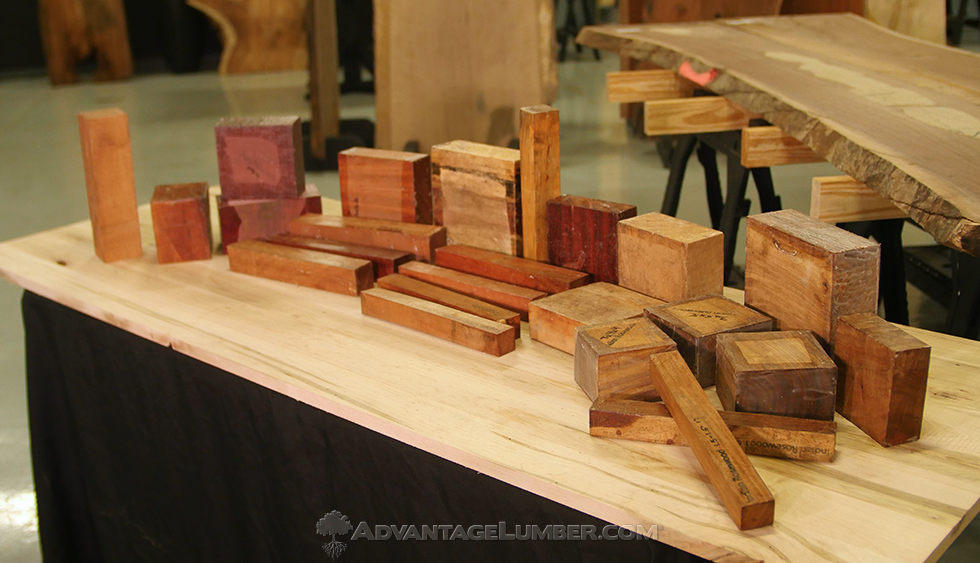Bubinga Specs
- Scientific Name
- Guibourtia spp. (G. demeusei, G. pellegriniana, G. tessmannii)
- Common Name(s)
- Bubinga, Kevazingo
- Distribution
- Equatorial Africa
- Janka Hardness
- 2,410 lbf (10,720 N)
- Appearance
- Heartwood ranges from a pinkish red to a darker reddish brown with darker purple or black streaks. Sapwood is a pale straw color and is clearly demarcated from the heartwood. Bubinga is very frequently seen with a variety of figure, including: pommele, flamed, waterfall, quilted, mottled, etc.
- Texture
- Grain is straight to interlocked. Has a uniform fine to medium texture and moderate natural luster.
- Workability
- Easy to work overall, though depending upon the species Bubinga can have silica present, which can prematurely dull cutting edges. Also, on pieces with figured or interlocking grain, tearout can occur during planing or other machining operations. Gluing can occasionally be problematic due to Bubinga’s high density and natural oils. Turns and finishes well.
- Common Uses
- Veneer, inlays, fine furniture, cabinetry, turnings, and other specialty items. Since Bubinga trees can grow so large, natural-edge slabs of the wood have also been used in tabletops and other specialized projects.


